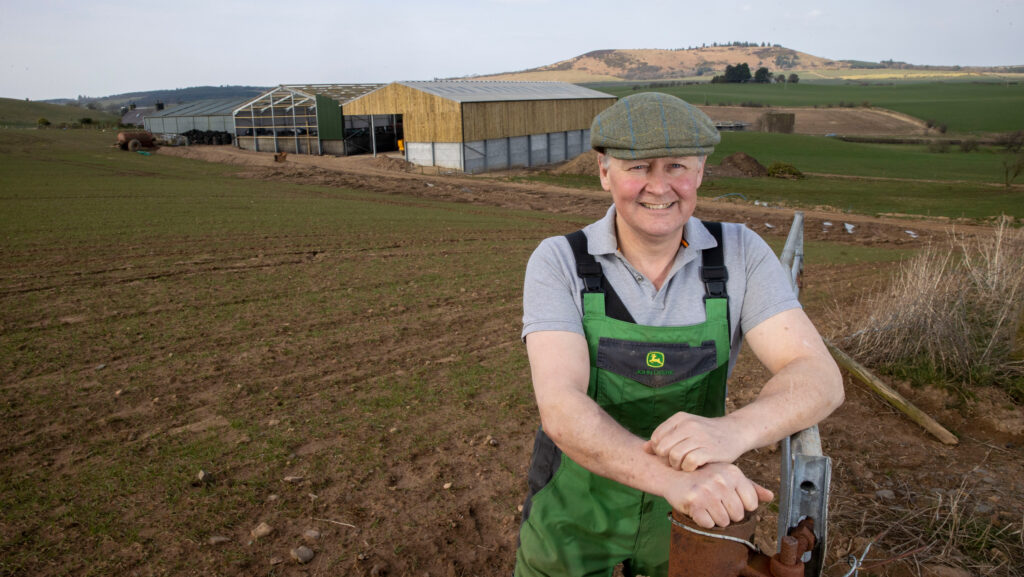Transition Farmer: Bigger beef herd improves cashflow
 Andrew McFadzean © Jeff Holmes
Andrew McFadzean © Jeff Holmes Transition farmers are striving to secure a better future for their businesses. We catch up with Andrew McFadzean on his beef enterprise in Scotland.
Increasing cattle numbers by 10% has helped costs of production and cashflow in Andrew McFadzean’s beef finishing business.
Now with continental- and native-crosses fattened at 400 head a year, he has diluted his fixed costs.
See also: How a beef-arable farm plans to combat volatile input costs
It also means that the value of home-grown cereals and other crops can be maximised. Focus has shifted from growing winter barley to winter wheat, as wetter winters are adversely affecting barley yield.
Farm facts: Dalchomie Farm, Kirkoswald
- 285ha split across three units
- Annual rainfall: 1,016mm
- Soil type: Upland 100-280m
Transition goals
- Increase cattle numbers and cut finishing time
- Reduce dependence on inputs
- Improve grassland and access.
The 2023 harvest, taken in September, saw wheat yields of 10t/ha but just 6t/ha for barley.
Although more expensive to grow, Andrew says winter wheat will make the business more resilient.
“We have taken winter barley out of the rotation completely as it doesn’t seem to work for us here and we now have 30ha of winter wheat.
Half will be wholecropped in July to include in the finishing ration, and the remainder combined. Spring barley is also grown on 40ha, but the amount fed in the ration has been reduced and replaced with fodder beet.
As well as growing more fodder beet, Andrew plans to graze it for the first time to reduce cost. A 4ha field with drier land has been earmarked for grazing bullocks, while 8ha will be lifted and fed in the shed.
Andrew says fodder beet is a “fantastically good feed for cattle”.
One of the chief risks is losing it to frost, but Andrew hopes that a fungicide application along with a late dressing of nitrogen (N) will maintain the leaf canopy for as long as possible.
With 15ha of beans grown to provide the protein element of the diet, minerals are the only bought-in feed.
The finishing ration consists of 7kg wholecrop, 7kg of a 14% blend of barley and beans, 7kg of fodder beet, and minerals.
“Feeding less cereal and more fodder beet over that 100-day fattening period seems to be working because we are maintaining average daily liveweight gains of 1.5kg/head,” says Andrew.
To meet another of his Transition goals of improving grassland, he has reseeded 12ha of silage land with a seed mix incorporating red clover. But the unusual weather conditions have hit hard.
“Although the clover is there it isn’t doing well, the plants have had cold, wet feet,” says Andrew.
“The nodules are there and they are the right colour and working, but they are not big enough to produce enough N. It is so tempting to slap on N, but I have been advised not to as it will make the clover lazy.”
No N is applied to the silaging fields, only to grazing grassland; by mid-June 120kg/ha of liquid N had been applied across two dressings.
